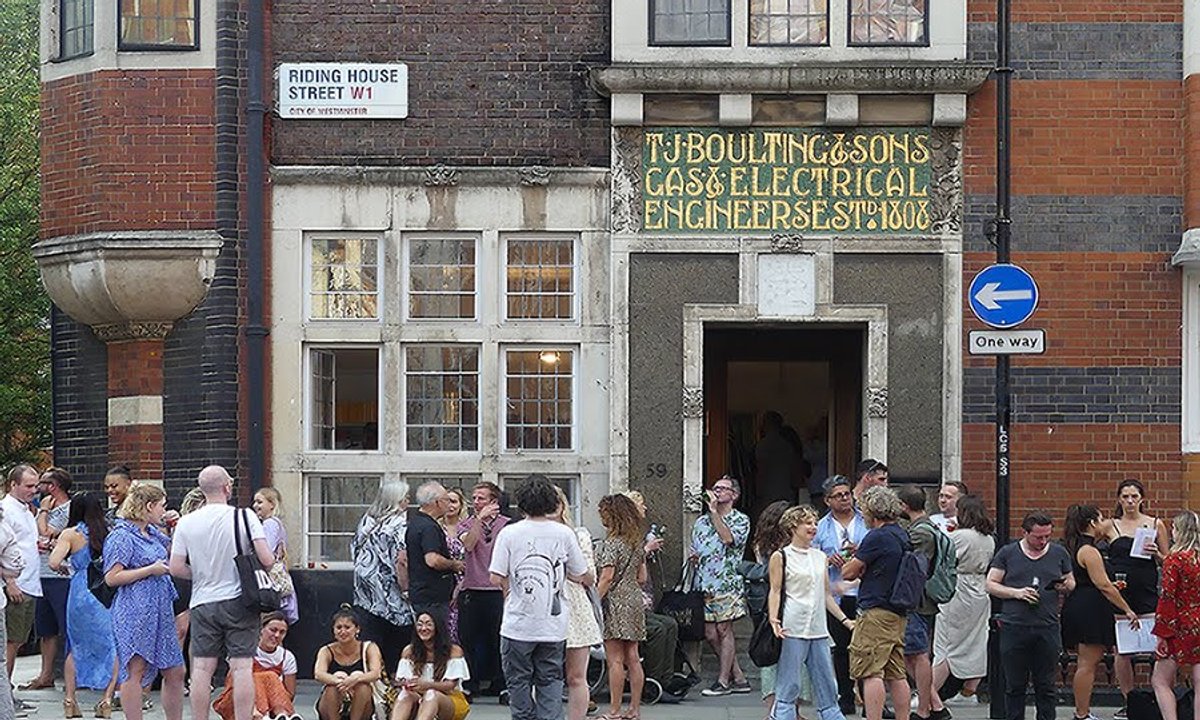TJ Boulting ran from 2012 to 2025 in Fitzrovia, London
Courtesy of TJ Boulting
The well-regarded central London gallery TJ Boulting has closed after 13 years in operation, it announced via Instagram on Friday (14 February).
“I chose Valentine’s Day to make the announcement because I wanted to end TJ Boulting on a positive note,” says Hannah Watson, who co-founded the gallery in 2012 alongside the late publisher Gigi Giannuzzi. “The decision has been brewing for a while and I’ve done everything I wanted to do with the gallery: built an exciting programme, worked with amazing artists, participated in art fairs, secured major museum acquisitions. Although it was a hard decision to choose to close the gallery, I feel the time is right to move on to new opportunities.”
Hannah Watson, the director of TJ Boulting
Courtesy of TJ Boulting
The ongoing art market downturn has “certainly been a factor” in deciding to close the gallery, Watson tells The Art Newspaper. “I don’t know many galleries that are having an easy time right now. I managed to keep going without compromising, but looking ahead to the next five to ten years you have to consider what is feasible. You are ultimately running a business.”
From the gallery’s two-storey space in an Art Nouveau building on the corner of Riding House Street, Fitzrovia, Watson ran not only TJ Boulting gallery but the photography and fine art book publisher Trolley Books—founded by Giannuzzi in 2001—which will continue to operate without a permanent space.
Trolley’s early focus on stylish presentations of heavy hitting photojournalism and politically charged art came to inform the core of the programming at TJ Boulting, which was particularly known for its focus on lens-based work. Included in the gallery’s eight-strong, all-female roster were the Indian documentary photographer and Deutsche Borse Foundation Photography Prize nominee Poulomi Basu and the portraitist Juno Calypso, who won the 2016 British Journal of Photography International Photography Award in 2016.
TJ Boulting was founded by Watson (right) and the late Gigi Giannuzzi (left)
Courtesy of TJ Boulting
Watson ran the gallery as the sole director after Giannuzzi’s death in 2013, and typically had to choose between staging an exhibition or preparing a book. This is something that “current market conditions don’t afford you anymore,” she says. “There is no breathing space. Going forward I want to free myself of those restrictions.”
Many of TJ Boulting’s artists are now without gallery representation, but Watson says she is not worried for any of them. “I consulted each of my artists before announcing the closure to the public. I am confident they will be picked up by other galleries.”
As for Watson’s future, alongside continuing Trolley, she is planning to engage more with public art, spurred by her experiences curating non-commercial shows at the nearby Fitzrovia Chapel, including solo exhibitions of Leigh Bowery and Caroline Walker.
Installation view of Sarah Lucas: An Oeuf is an Oeuf, at TJ Boulting
© TJ Boulting
Watson also notes that TJ Boulting, while “very much a commercial gallery”, has always also “functioned as a hub” for the art and photography community, hosting book launches and workshops. It has enlisted a number of guest curators for group shows including the art critic Charlotte Jansen—whose exhibition focused on birth—and the editor Louis Wise, who explored the male gaze. Recently, it staged an exhibition dedicated to Sarah Lucas, for which the artist invited visitors who identified as a woman or men dressed as women to throw an egg against a wall, the results creating a large abstract work.
Since founding TJ Boulting, Watson says she has seen Fitzrovia grow into a significant gallery hub, bolstered by almost a dozen additions in the past few years. "Galleries come and go. It’s a cyclical process and part of an ecosystem—it’s not always a sad thing,” she says. “It’s been wonderful to see a group of new spaces emerge here, bringing a younger energy. In closing, I feel like I’m passing the mantle on to them. And good luck. It’s a rewarding business but also a very tough one.”
Long-standing Chelsea gallery was synonymous with the artists of Pictures Movement—including Cindy Sherman, discovered while working as a receptionist
Collectors show greater interest in photographers but larger galleries still favour mid-career and older artists
With newfound backing from the world's biggest gallery, is the activist-photographer's art market poised for take off?
Few buyers, but innovative galleries win the public's approval

